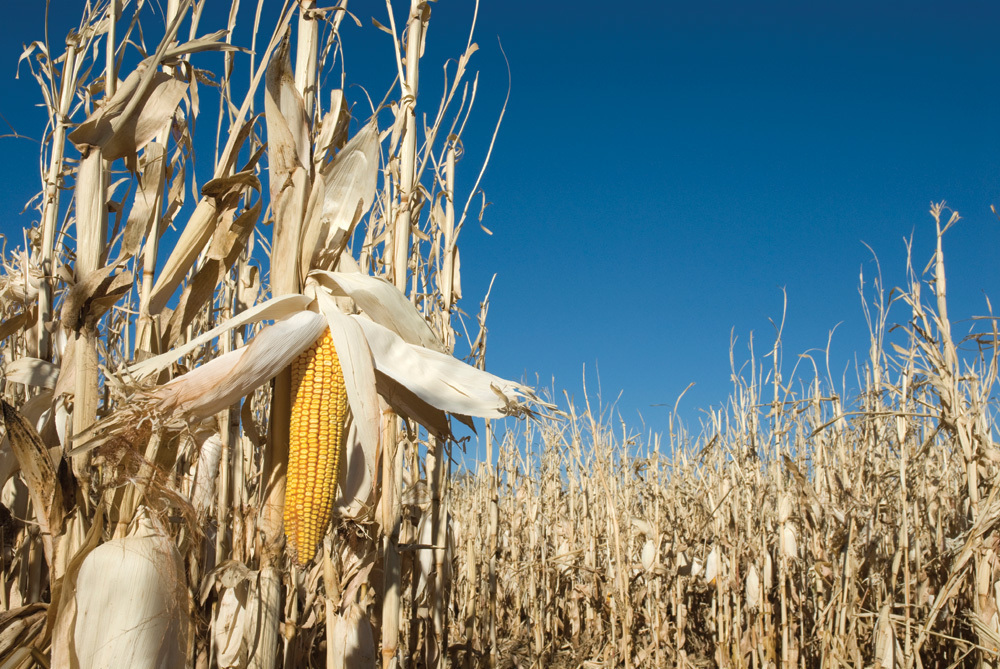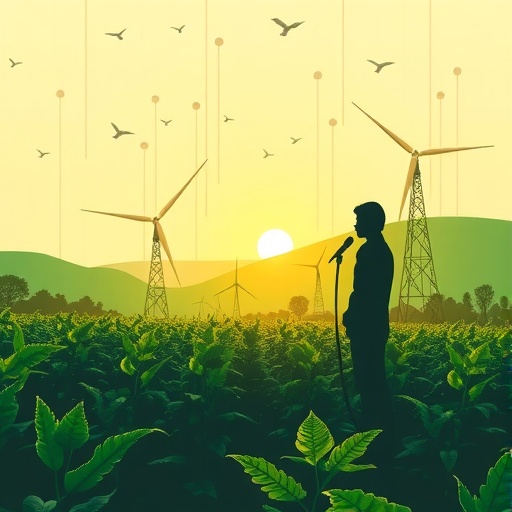Automated vertical farming startup Vertical Future up for sale after posting $13m loss – AgFunderNews

Report on the Insolvency of Vertical Future and its Implications for Sustainable Development Goals
Executive Summary
The UK-based vertical farming firm, Vertical Future, has been listed for sale on an insolvency marketplace following pre-tax losses exceeding £10 million ($13.2 million). This development highlights significant financial headwinds within the Controlled Environment Agriculture (CEA) sector, posing challenges to the achievement of several United Nations Sustainable Development Goals (SDGs), particularly those related to food security, sustainable industry, and economic growth.
Company Background and Innovation in Context of SDG 9
Founded in 2016, Vertical Future initially focused on growing produce before pivoting to the design and manufacture of vertical farming infrastructure. This strategic shift aligns directly with SDG 9: Industry, Innovation, and Infrastructure, which encourages the development of resilient infrastructure and the fostering of innovation.
- The company developed a highly automated system, promising “hands-free automation from seed to harvest.”
- Over 90% of this system was designed and manufactured in-house.
- Operations were supported by a proprietary SaaS platform, DIANA.
- The company received a £1.5 million ($2 million) grant from the UK Space Agency in 2024 to develop grow systems for space, further underscoring its innovative capacity.
Despite being named the “#1 CEA company” in Forward Fooding’s 2024 FoodTech500 list, the company’s financial instability demonstrates the difficulty in scaling such innovations sustainably.
Financial Distress and Setbacks for SDG 8
Vertical Future’s financial collapse, despite having raised approximately £37 million ($49 million) to date, signals a direct setback for SDG 8: Decent Work and Economic Growth. The company cited a “difficult capital environment” as a primary factor in its struggles. The failure to secure additional funding and subsequent insolvency jeopardizes jobs and undermines the goal of promoting sustained and inclusive economic growth through technological advancement.
Sector-Wide Challenges and Impact on Sustainable Food Systems
A Pattern of Failure in the CEA Sector
The case of Vertical Future is not an isolated incident but part of a broader trend of financial distress within the indoor agriculture industry. This pattern presents a significant obstacle to the sector’s potential contributions to global sustainability targets. Other notable companies facing similar outcomes include:
- InFarm: Entered administration in 2023.
- Freight Farms: Ceased operations in April 2024 before its assets were acquired.
- Fifth Season: An automation-focused operation that shuttered.
- Bowery and Plenty: Former unicorns that have faced significant operational challenges and closures.
Implications for SDG 2 and SDG 11
The widespread struggles in the vertical farming sector directly impact progress towards SDG 2: Zero Hunger and SDG 11: Sustainable Cities and Communities. Vertical farming is often promoted as a solution to enhance food security by enabling local, year-round production, reducing food miles, and building resilient urban food systems. Each corporate failure represents a lost opportunity to advance these goals and strengthen local food supply chains.
Pathways to Viability and Alignment with SDG 12 and SDG 13
Models for Sustainable Success
Despite the challenges, some companies demonstrate viable pathways forward by addressing core sustainability and economic issues. These successes offer a blueprint for aligning the sector with key SDGs.
- Oishii: Raised $150 million in Series B funding and expanded with an R&D center in Japan.
- Square Roots: Expanded to Japan to operate a network combining high-tech indoor agriculture with traditional farming methods.
- Grow Up Farms: A UK-based startup that maintains operations by running on 100% renewable energy, directly addressing a key criticism of the sector.
The Central Role of Energy and Capital
The viability of vertical farming is intrinsically linked to its ability to manage high capital and energy costs. As noted by Eduardo Clemente of Generate Capital, an investor in Grow Up Farms, the sector’s model requires achieving high volumes at a competitive cost to ensure a reasonable payback. This economic reality has profound implications for sustainability.
For the sector to meaningfully contribute to SDG 12: Responsible Consumption and Production and SDG 13: Climate Action, it must overcome its high energy intensity. The model employed by Grow Up Farms, utilizing 100% renewable energy, exemplifies a production pattern that is both economically and environmentally sustainable, offering a potential solution to one of the industry’s most significant challenges.
1. Which SDGs are addressed or connected to the issues highlighted in the article?
-
SDG 2: Zero Hunger
The article discusses vertical farming, an innovative agricultural practice aimed at producing food (leafy greens, strawberries). This directly relates to creating sustainable and resilient food production systems.
-
SDG 7: Affordable and Clean Energy
The article explicitly highlights energy as a critical factor for the viability of vertical farms. It mentions that the sector “requires significant energy” and points to a successful company, Grow Up Farms, which “runs off 100% renewable energy,” linking the sector’s sustainability to clean energy sources.
-
SDG 8: Decent Work and Economic Growth
The core of the article revolves around the financial struggles and insolvency of Vertical Future, which posted “pre-tax losses that exceed £10 million.” It also lists other bankruptcies in the sector, highlighting the challenges of achieving sustainable economic growth and creating viable business models in this innovative industry.
-
SDG 9: Industry, Innovation, and Infrastructure
This is a central theme, as Vertical Future is an “agritech firm” that developed innovative infrastructure, including “hands-free automation from seed to harvest” and “grow systems for space.” The article discusses the struggle to fund this innovation and the importance of R&D, evidenced by the grant from the UK Space Agency.
-
SDG 12: Responsible Consumption and Production
The article touches on the sustainability of production patterns. Vertical farming is presented as a modern production method, but its high capital and energy intensity (“capital intensive and requires significant energy”) pose challenges to achieving sustainable production, a key aspect of SDG 12.
2. What specific targets under those SDGs can be identified based on the article’s content?
-
SDG 2: Zero Hunger
- Target 2.4: “By 2030, ensure sustainable food production systems and implement resilient agricultural practices that increase productivity and production…” The article’s focus on vertical farming as a high-tech agricultural practice, along with its economic and energy challenges, directly relates to the effort to implement new and potentially more resilient food production systems.
-
SDG 7: Affordable and Clean Energy
- Target 7.2: “By 2030, increase substantially the share of renewable energy in the global energy mix.” The success of Grow Up Farms, which “runs off 100% renewable energy,” is presented as a viable model, directly addressing this target as a solution to the high energy costs plaguing the sector.
-
SDG 8: Decent Work and Economic Growth
- Target 8.2: “Achieve higher levels of economic productivity through diversification, technological upgrading and innovation…” The article describes vertical farming as a sector based on technological upgrading. However, the widespread bankruptcies and financial losses show the difficulty in achieving the economic productivity and sustainability required by this target.
-
SDG 9: Industry, Innovation, and Infrastructure
- Target 9.4: “By 2030, upgrade infrastructure and retrofit industries to make them sustainable, with increased resource-use efficiency and greater adoption of clean and environmentally sound technologies…” Vertical farming represents an attempt to create new, sustainable agricultural infrastructure. The article highlights the challenge of resource efficiency, particularly energy, in making this technology sustainable.
- Target 9.5: “Enhance scientific research, upgrade the technological capabilities of industrial sectors… encouraging innovation…” Vertical Future’s work on “hands-free automation” and its “£1.5 million ($2 million) grant from the UK Space Agency” to develop space-based systems are direct examples of efforts to enhance research and upgrade technological capabilities.
-
SDG 12: Responsible Consumption and Production
- Target 12.2: “By 2030, achieve the sustainable management and efficient use of natural resources.” The article implies that the efficient use of energy is a major hurdle for the vertical farming industry. The statement that it “requires significant energy” points to a challenge in meeting this target, while the use of renewables by some companies shows a path forward.
3. Are there any indicators mentioned or implied in the article that can be used to measure progress towards the identified targets?
-
For SDG 8 (Decent Work and Economic Growth)
- Financial Viability: The article provides concrete financial data that can serve as indicators of economic sustainability. These include “pre-tax losses that exceed £10 million” for Vertical Future and the total “£37 million ($49 million)” in funding raised.
- Business Survival Rate: The “long list of indoor ag startups that have declared bankruptcy or shuttered operations” is an implied indicator of the sector’s struggle to achieve stable economic growth.
-
For SDG 9 (Industry, Innovation, and Infrastructure)
- Investment in R&D: The “£1.5 million ($2 million) grant” from the UK Space Agency is a specific indicator of public investment in research and development within the sector.
- Technological Development: The creation of proprietary technology, such as Vertical Future’s system that was “more than 90%… designed and manufactured in house,” serves as a qualitative indicator of innovation.
-
For SDG 7 (Affordable and Clean Energy) & SDG 12 (Responsible Consumption and Production)
- Share of Renewable Energy in Production: The mention that Grow Up Farms “runs off 100% renewable energy” is a direct, quantifiable indicator of progress towards sustainable production and clean energy use.
- Energy Intensity: The statement that the sector “requires significant energy” implies that energy consumption per unit of output is a key performance indicator for the sustainability and viability of these businesses.
-
For SDG 2 (Zero Hunger)
- Production Volume: The need to “achieve high volumes” to be competitive is mentioned as a key factor for success. This implies that production volume is a critical indicator for measuring the contribution of vertical farming to food systems.
4. SDGs, Targets and Indicators Table
| SDGs | Targets | Indicators (Mentioned or Implied in the Article) |
|---|---|---|
| SDG 2: Zero Hunger | 2.4: Ensure sustainable food production systems and implement resilient agricultural practices. |
|
| SDG 7: Affordable and Clean Energy | 7.2: Increase substantially the share of renewable energy in the global energy mix. |
|
| SDG 8: Decent Work and Economic Growth | 8.2: Achieve higher levels of economic productivity through technological upgrading and innovation. |
|
| SDG 9: Industry, Innovation, and Infrastructure | 9.4: Upgrade infrastructure to make them sustainable and increase resource-use efficiency.
9.5: Enhance scientific research and upgrade technological capabilities. |
|
| SDG 12: Responsible Consumption and Production | 12.2: Achieve the sustainable management and efficient use of natural resources. |
|
Source: agfundernews.com

What is Your Reaction?
 Like
0
Like
0
 Dislike
0
Dislike
0
 Love
0
Love
0
 Funny
0
Funny
0
 Angry
0
Angry
0
 Sad
0
Sad
0
 Wow
0
Wow
0











































































